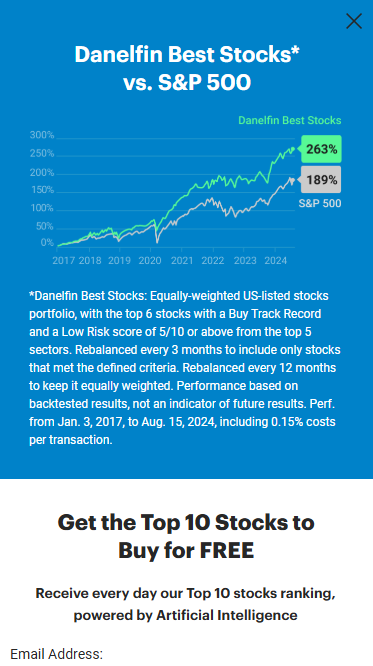20 Top Ideas For Selecting AI Stock Trading Platform Sites
20 Top Ideas For Selecting AI Stock Trading Platform Sites
Blog Article
Top 10 Tips To Evaluate The Strategy Customization Of Ai Stock Predicting/Analyzing Trading Platforms
AI trading platforms that can predict or analyze stocks are well-known for their capacity to modify strategies that meet the requirements of users. This allows them to adjust to specific goals and conditions, including the risk tolerance. Platforms that have powerful customization capabilities can improve your trading efficiency. Here are 10 tips to evaluate the customizability of the platforms.
1. Evaluate Pre-Built Strategy Templates
A Variety of Templates: Check if the trading platform has templates pre-built for different types of trading (e.g. Day Trading and Swing Trading, as well as Long-Term Investing).
You can easily modify the templates to adapt them to meet your particular needs.
Performance historical data. Check if the platform has historic performance data for previously built strategies.
2. Create a Custom Strategy
Drag-and-drop: Search for platforms that provide drag-and-drop interfaces when creating custom strategies.
Coding options: For users who are more advanced, check if the platform supports custom programming using a proprietary scripting language (e.g. Python, R).
Flexibility. You must define key components such as risk management parameters, entry/exit regulations, and other elements of your strategy.
3. Check for Backtesting Capabilities
Historical data: Make sure that the platform has enough historical data to backtest your strategies.
Customizable Parameters: You should be able adjust parameters, such as indicators and timeframes during backtesting.
Performance metrics: Verify whether the platform provides specific performance metrics for backtested strategies (e.g. win rate sharpe ratio, drawdown).
4. Evaluate Real-Time Strategy Testing
Paper trading Try out strategies in real-time using simulation or paper trading.
Live testing: See whether you're able to test your strategies in real market conditions with small amounts of capital.
Real-time Adjustments: Determine whether you can adjust your settings in real time according to the market conditions.
5. Examine the degree of integration using technological indicators
Indicator Library: Determine that the platform includes an indicator library for technical indicators (e.g. moving averages, RSI or MACD).
Custom indicators. Make sure you are able to create or use customized indicators as part of your strategy.
Indicator combinations: Verify whether the platform supports the combination of several indicators to make more complex strategies.
6. Check for Risk Management Tools
Stop-loss/take-profit: Ensure the platform allows you to set stop-loss and take-profit levels within your strategies.
Position sizing - Examine to see if there are any guidelines you can follow (e.g. an amount fixed or a percentage of your portfolio) to control the risk.
Risk-reward: Check if your platform allows you to determine risk-rewards for each strategy or trade.
7. Evaluate Multi-Asset Strategy Support
Asset classes: Ensure the platform supports strategies across various asset classes (e.g., stocks, ETFs, options, forex).
Strategies that cross assets: You could develop strategies that incorporate multiple asset categories (e.g. pair trading, hedges).
Market coverage: Ensure that the platform you're interested in is covered by the markets that interest you (e.g. US or international cryptocurrencies, copyright).
8. Review the automation and Execution
Automated trading: Make sure the platform allows automated execution of strategies based on predetermined rules.
Types of orders - Make sure that the platform supports a range of order types for execution strategies (e.g. stop limit, market or stop).
Latency: Make sure that the platform has a minimum latency for trading, particularly if you are using high-frequency strategies.
9. Look for tools for optimizing your strategy.
Optimizing parameters: Make sure that the platform has tools to optimize the parameters of your strategy (e.g. grid search or genetic algorithms).
Integration of machine learning: Determine if the platform uses machine learning for refinement or improvement of strategies.
Scenario analysis: Verify if the platform allows testing strategies under different market scenarios (e.g. bear, bull, volatile).
Review User Feedback
User feedback Conduct research on users to assess the effectiveness of the platform in customizing strategies.
Community forums: Find out whether the platform hosts an active community where users can discuss and share their custom strategies.
Support resources: Ensure the platform has tutorials, webinars or documentation to help users develop and improve strategies.
Bonus Tips
Trial period: Test the customisation capabilities of the platform with a free demo or trial.
Scalability: Make sure the platform is able to handle more complicated strategies in your trading evolves.
Customer support Find out if there's support available for queries or issues related to strategy.
By following these tips you will be able to evaluate the potential of an AI stock-predicting/analyzing trading platform to customize strategy. This will enable you to choose a platform that matches your objectives in trading and permits you to implement and refine strategies. A platform with robust customization capabilities can allow you to be flexible to changes in market conditions and improve the performance of your trading. See the top rated best ai stock for site info including investing ai, chatgpt copyright, ai trading, best ai stock trading bot free, chatgpt copyright, best ai trading software, market ai, ai for investment, ai stocks, best ai trading app and more.
Top 10 Tips On How To Evaluate The Updating And Maintenance Of Ai Stock Predicting Trading Platforms
To ensure that AI-powered stock trading and prediction platforms remain secure and effective They must be maintained and regularly updated. Here are the top 10 tips to assess the maintenance and update practices of these platforms:
1. Updates occur frequently
Verify the frequency of updates on your platform (e.g. weekly, monthly, or quarterly).
Why: Regular updates are an indication of active development and an ability to adapt to changes in the market.
2. Transparency of Release Notes
Review the release notes for your platform to find out what improvements and changes were implemented.
Release notes that are transparent demonstrate the platform's commitment to continuous advancement.
3. AI Model Retraining Schedule
Tips - Find out how often AI models are trained on new data.
Why: Markets evolve, and models have to change to remain relevant and accurate.
4. Bug Corrections and Issue Resolution
Tips: Find out how quickly the platform reacts to problems or bugs users have reported.
Reason: Rapid bug fixes help ensure the platform's reliability and functionality.
5. Updates to Security
Tips: Make sure that the platform regularly updates its security protocol to protect user data.
Why is cyber security important? on financial platforms to prevent fraud.
6. New Features Integration
TIP: Make sure to check whether the platform has introduced new features (e.g. advanced analytics, new data sources) in response to user feedback or market trends.
What's the reason? The updates to feature features demonstrate creativity and responsiveness to the needs of users.
7. Backward Compatibility
Tip: Ensure that updates do not disrupt existing functions or require major reconfiguration.
What is the reason? It is essential to provide an easy user experience during transitions.
8. User Communication during Maintenance
Consider evaluating the way in the way your platform informs users about planned maintenance or outages.
What is the reason? Clear communication prevents the chance of disruption and boosts confidence.
9. Performance Monitoring and Optimization
Tips - Make sure that the platform continuously monitors the performance metrics (e.g. accuracy, latency) and optimizes systems.
The reason is that ongoing optimization can make sure that the platform stays efficient.
10. Conformity to Regulatory Changes
Tips: Find out whether the platform has new options or policies that conform with regulations governing financial transactions and data privacy laws.
Reasons: Regulatory compliance is vital to minimize legal risks and preserve confidence in the user.
Bonus Tip User Feedback Integration
Check if updates and maintenance are based on user feedback. This indicates an attitude towards users and a firm dedication to making improvements.
Through analyzing these elements, you can make sure that the AI-based stock prediction and trading platforms you select are regularly maintained, updated and capable of adapting to the changing dynamics of markets. Read the top ai in stock market tips for more recommendations including ai for trading stocks, ai share trading, best ai stock prediction, investing with ai, free ai stock picker, ai stock investing, invest ai, ai investment tools, best ai penny stocks, best ai for stock trading and more.